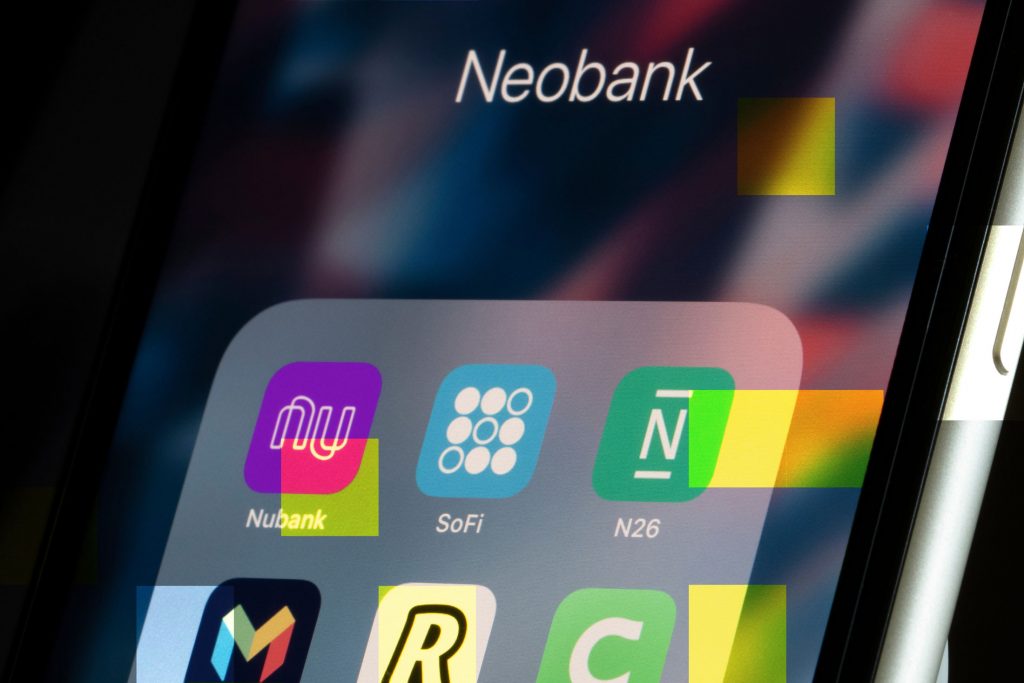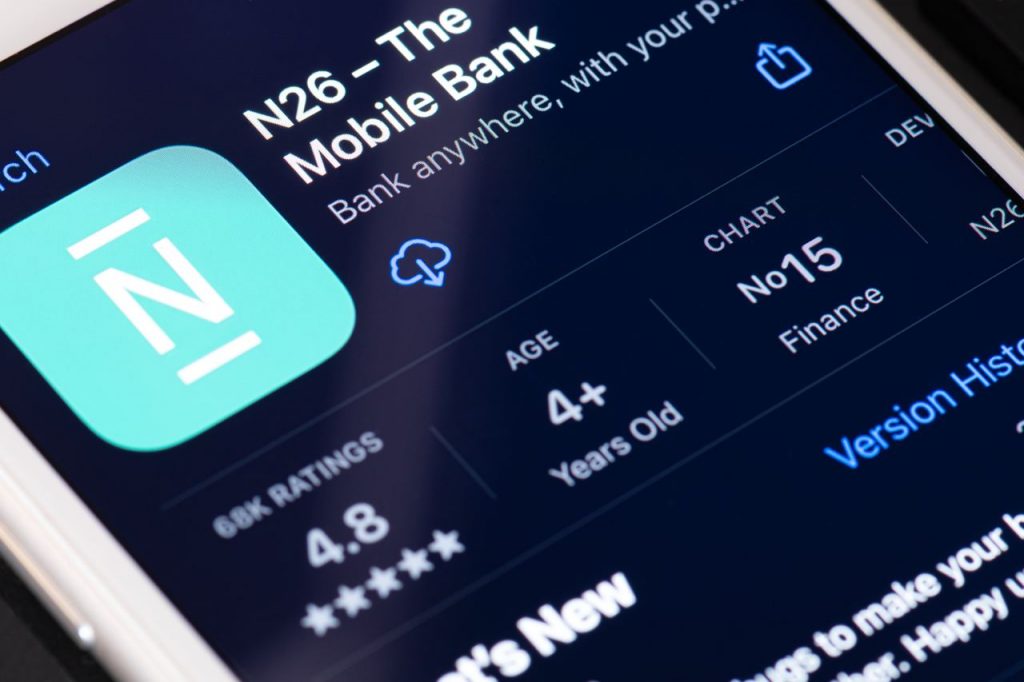
Neobanks are digital-only banks that operate without physical branches and offer innovative financial services to customers. They are powered by fintech, which is the use of technology to improve and automate the delivery of financial products and services. Neobanks are challenging the traditional banking industry by offering faster, cheaper, and more convenient solutions to consumers and businesses. And we, at FortySeven, know perfectly how to challenge the traditional banking industry. In our portfolio you can find hundreds of already developed neobanks, and our own fintech software solution that can be used as a SaaS and as a part of your own neobank.
In this article, we will explore the impact of neobanks on traditional banking, how they work, what are their advantages and disadvantages, and what is the outlook for this emerging sector.
The Rise Neobanks System in FinTech
Neobanks are a type of Fintech Company that provide banking services exclusively through digital platforms, such as mobile apps and websites. They do not have physical branches, ATMs, or call centers, and they rely on third-party providers or partner banks for regulatory compliance and infrastructure.
This system offer a range of financial products and services, such as current accounts, savings accounts, debit cards, credit cards, loans, investments, insurance, and more.
Moreover, it has emerged in the aftermath of the global financial crisis of 2008, when many people lost trust in traditional banks and sought alternative options. The rise of smartphones, cloud computing, and artificial intelligence also enabled the development of neobanks, as they could leverage these technologies to create user-friendly and personalized experiences for customers.
Some of the first neobanks were launched in Europe, such as Revolut, N26, and Starling Bank, and soon they expanded to other regions, such as North America, Asia, and Australia.
Neobanks Successful Over Traditional Banking

These digital-only banks that use fintech to offer better, faster, and cheaper financial services than traditional banks. They have lower fees, higher rates, and more convenience for customers and businesses.
The best part of these banks overall other kind of banks is Use of Artificial Intelligence. They use data and AI to personalize and innovate their products and services, and cater to diverse and underserved segments of the population. The fact is these are disrupting the traditional banking industry and creating more value and choice for customers.
Nedbank’s Business Model is different than traditional Banking Model
Neobanks work by collaborating with licensed banks or obtaining their own banking licenses, depending on the regulatory environment and the market they operate in.
They use cloud-based platforms and APIs (application programming interfaces) to connect with third-party providers and offer various financial services to customers. These banks uses artificial intelligence and machine learning to analyze customer data and provide personalized and automated solutions. Neobanks have different business models depending on their target market, revenue streams, and cost structure.
Some of the common business models are:
B2C (business-to-consumer):
They target individual customers and offer them retail-banking services, such as current accounts, savings accounts, debit cards, credit cards, loans, investments, and insurance. They generate revenue from fees, commissions, interest, interchange, and subscription. Some examples of B2C neobanks are Monzo, Revolut, N26, and Chime.
B2B (business-to-business):
These target business customers and offer them corporate banking services, such as business accounts, payment solutions, invoicing, accounting, payroll, and lending. They generate revenue from fees, commissions, interest, and subscription. Some examples of B2B neobanks are Tide, Qonto, Holvi, and Mercury.
BaaS (banking-as-a-service):
In this model, they give platform and infrastructure for other fintech companies, non-financial companies, or traditional banks to offer banking services to their customers. They generate revenue from fees, commissions, and subscription. Some examples of BaaS neobanks are Solarisbank, Railsbank, Bankable, and Synapse.
Advantages of NeoBanks
- Fee-free, better rates than traditional banks.
- 24/7 access via phones/computers for customer convenience.
- AI tailors products, offers budget tools, rewards.
- Serve diverse groups with niche services: travel, gaming, crypto, green banking.
Challenges in NeoBanks
- Neobanks tackle regulatory hurdles and cybersecurity risks.
- Profitability and scalability are challenges in a competitive market.
- Building customer loyalty in a digital-only space requires top-notch service, security, and a strong brand to rival traditional banks.
Nedbank’s Growth and History Outlook
According to a report by Juniper Research, the number of neobank users worldwide is expected to reach 1.4 billion by 2024, up from 0.3 billion in 2019, representing a compound annual growth rate (CAGR) of 48%. The report also estimates that the global neobank market will generate $394 billion in revenue by 2026, up from $27 billion in 2020, representing a CAGR of 46%.
There is also a rising demand for financial inclusion particularly among the unbanked and changing customer expectations accelerated by the COVID-19 pandemic. Supportive regulatory environments in regions like Europe and Asia further fuel neobank growth by providing licenses and incentives.
Neobanks Industry Growth Outlook and CaseStudies

There are many neobanks operating in different regions and markets, offering various products and services to customers and businesses. Some of the top:
Revolut:
Revolut is a UK-based neobank that offers current accounts, savings accounts, debit cards, credit cards, loans, investments, insurance, crypto, and more. It has over 15 million customers and is valued at $5.5 billion. Revolut aims to become the world’s first global financial super app, by offering a one-stop shop for all financial needs, across different markets and currencies.
N26:

N26 is a Germany-based neobank that offers current accounts, savings accounts, debit cards, credit cards, loans, insurance, and more. N26 has over 7 million customers and is valued at $3.5 billion. The industry growth outlook for these and other neobanks is very positive, as they have the potential to capture a large share of the global banking market, which is estimated to be worth $134.1 trillion by 2025.
According to a report by Accenture, neobanks could grow their revenues by 31% annually over the next five years, reaching $356 billion by 2026. The report also predicts that neobanks could increase their customer base by 25% annually over the same period, reaching 459 million by 2026.
And we at FortySeven know how to guide in launching your own neobank. Book a free consultation to know more about our expertise in fintech.
Conclusion
The rise of neobanks is a major trend in the banking industry, as they offer faster, cheaper, and more convenient financial services than traditional banks. They use fintech, which is technology that improves and automates finance. They challenge traditional banks to improve their customer experience and offer financial inclusion and empowerment to millions of people.
If you want to learn more about neobanks and how they can help you or your business, you can contact us for a free fintech consultation. We have experts who can explain the features, benefits, and challenges of neobanks, and help you to build your own neobank to become a new fintech market player. You can also check our Forbes articles about fintech.



